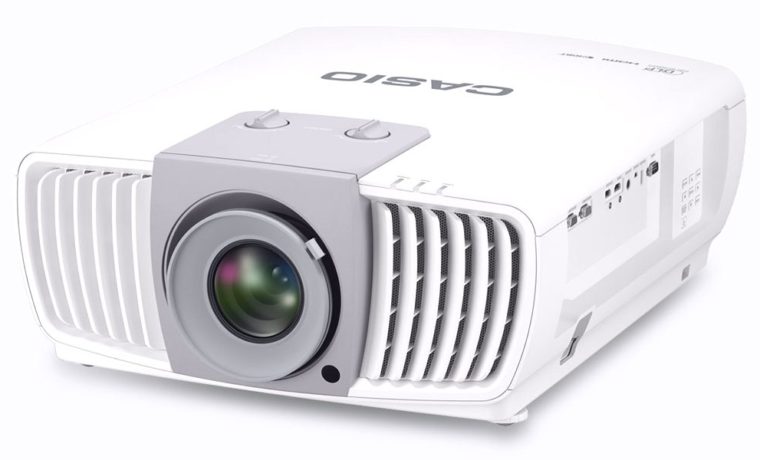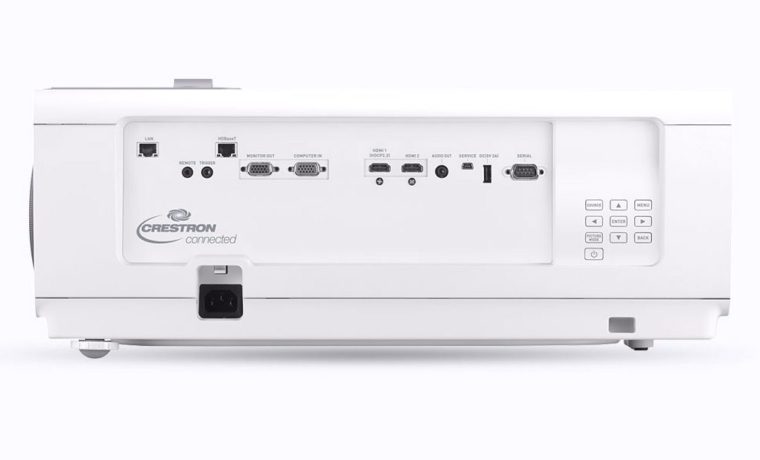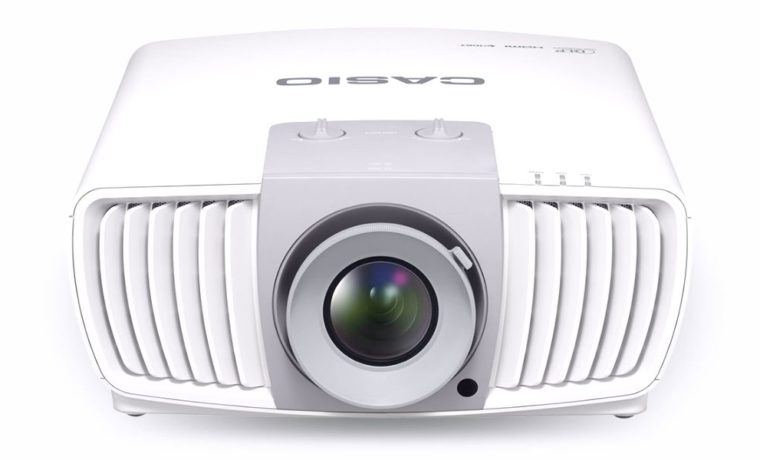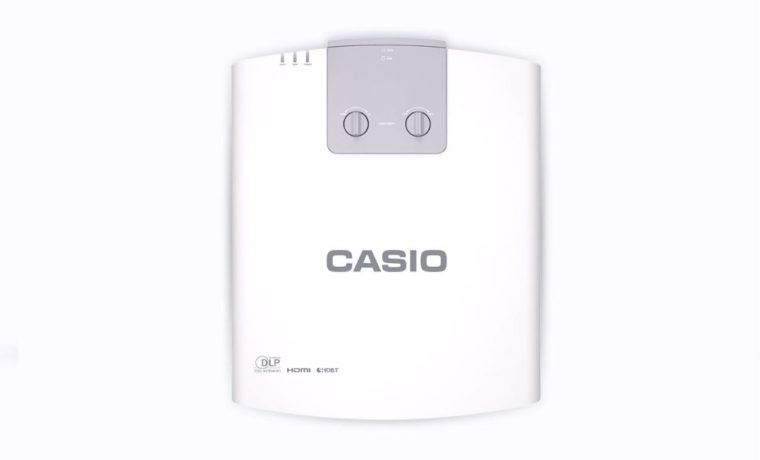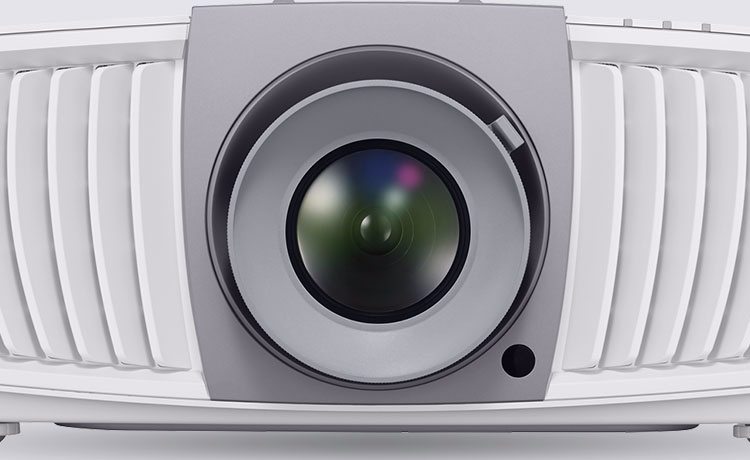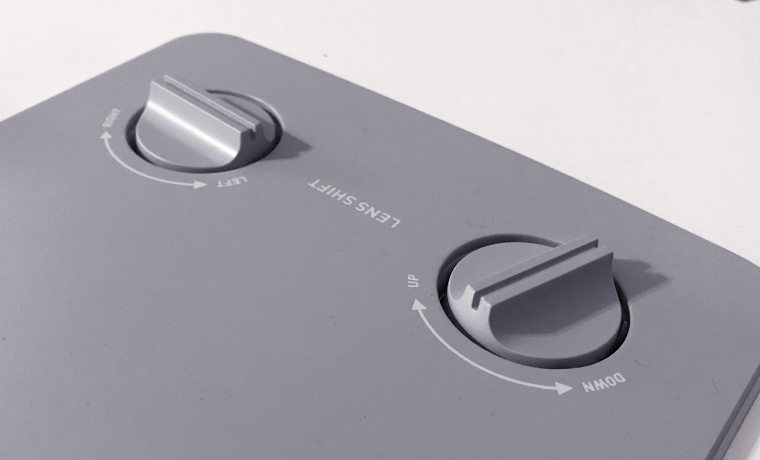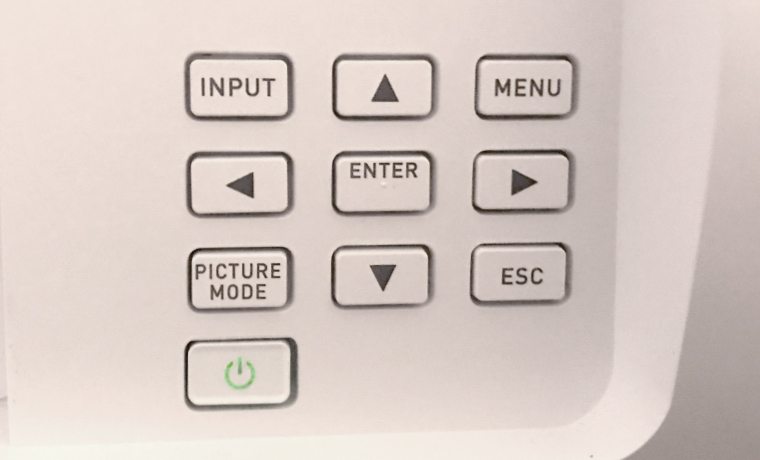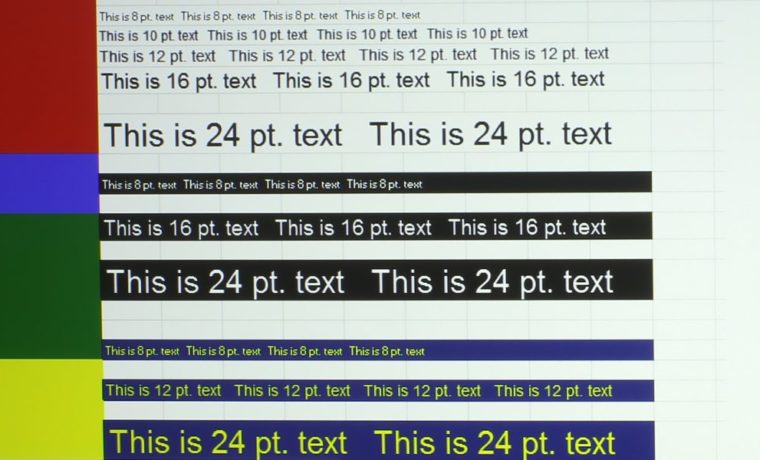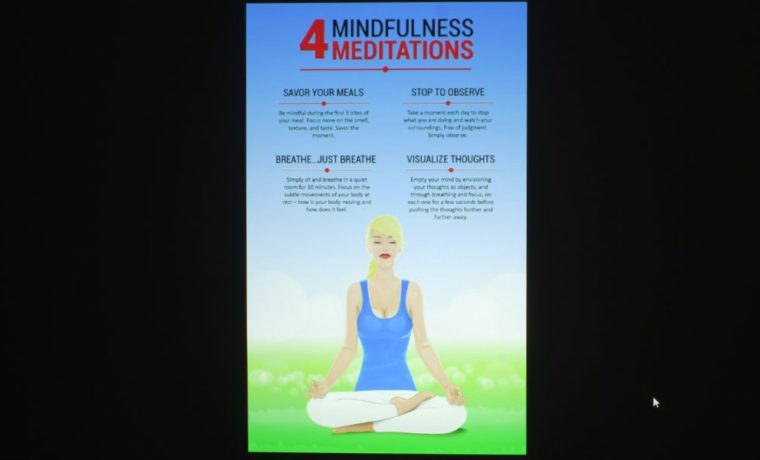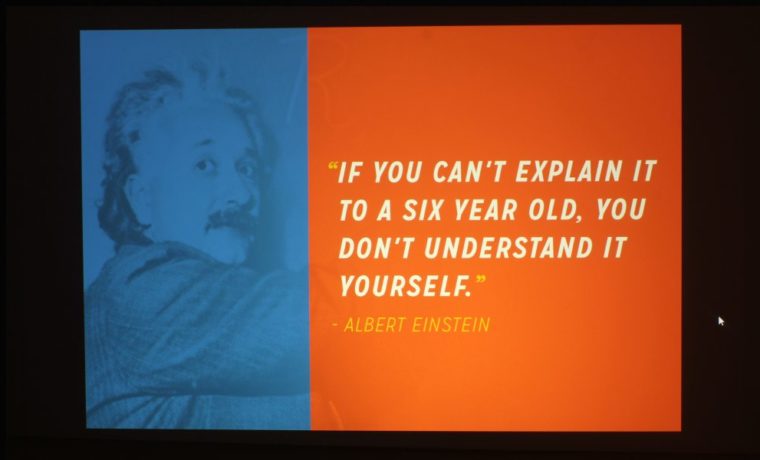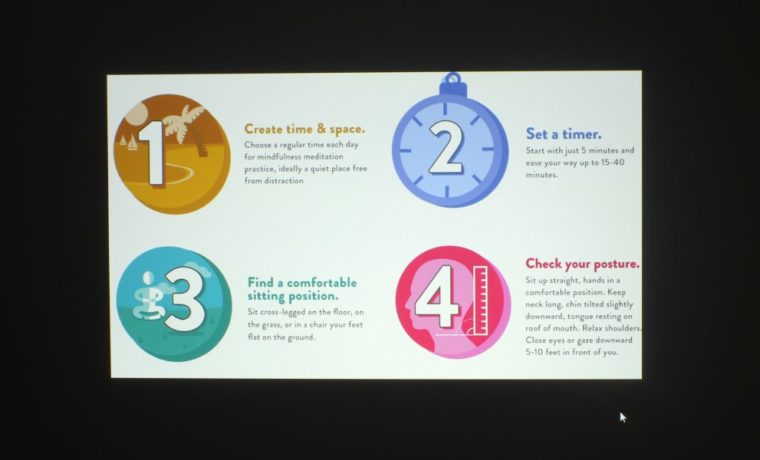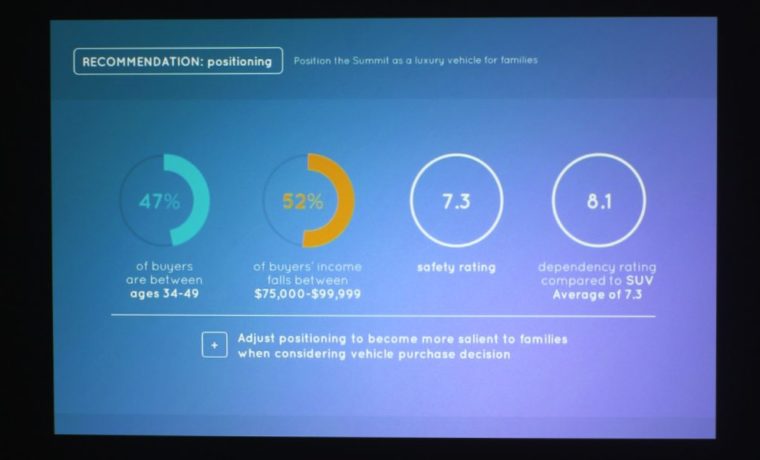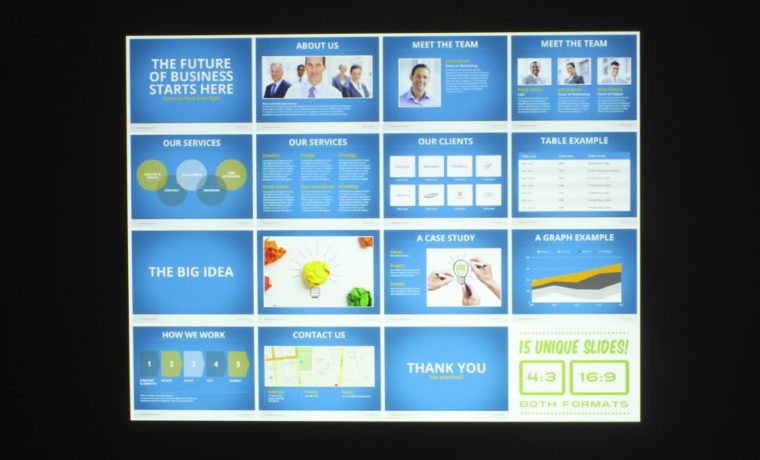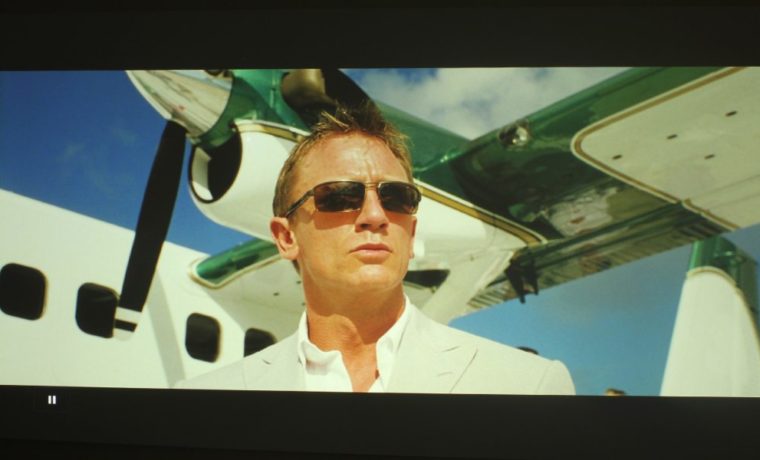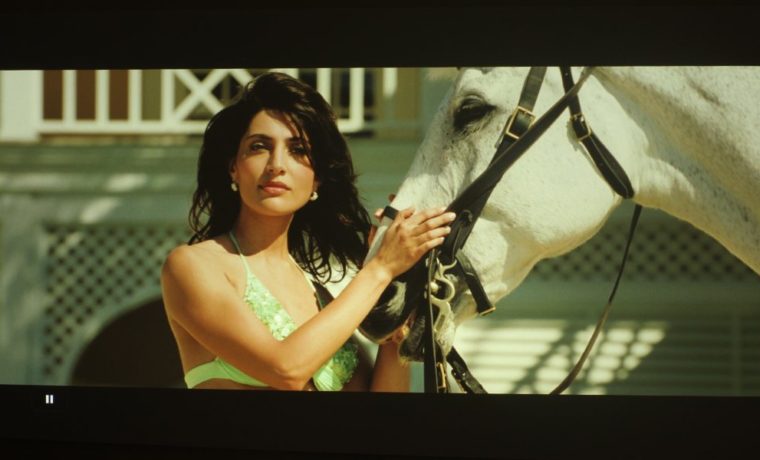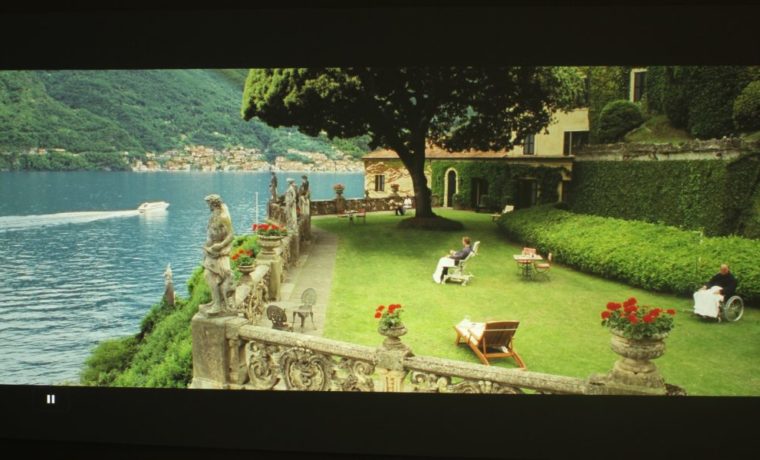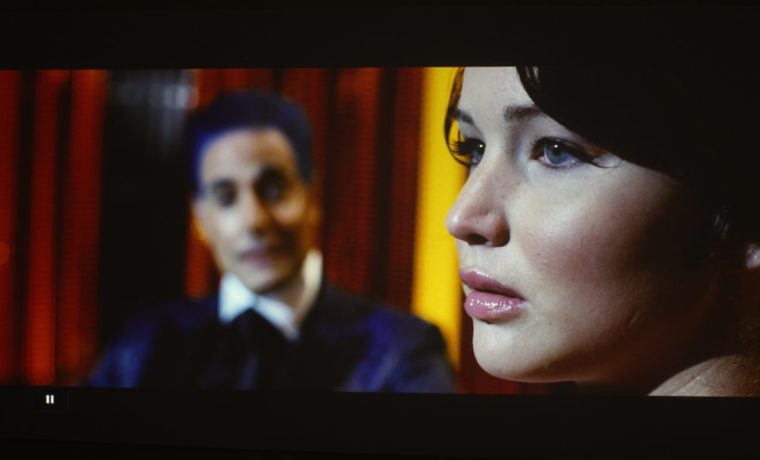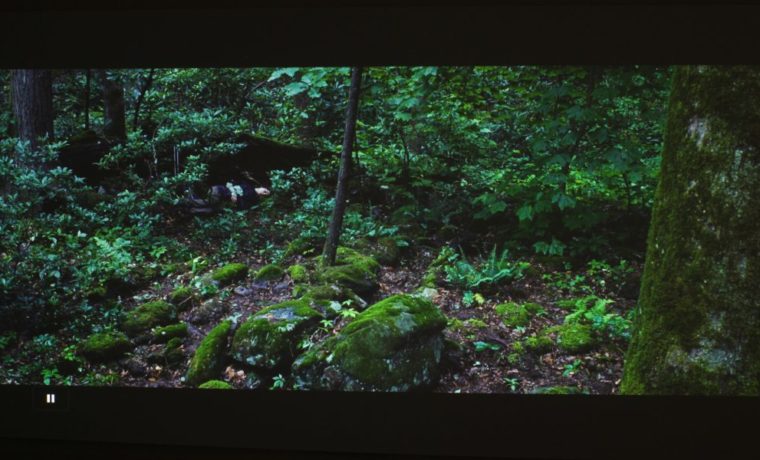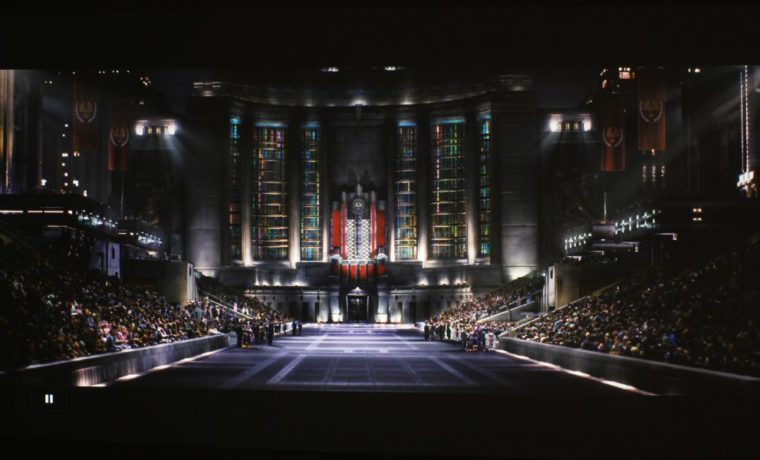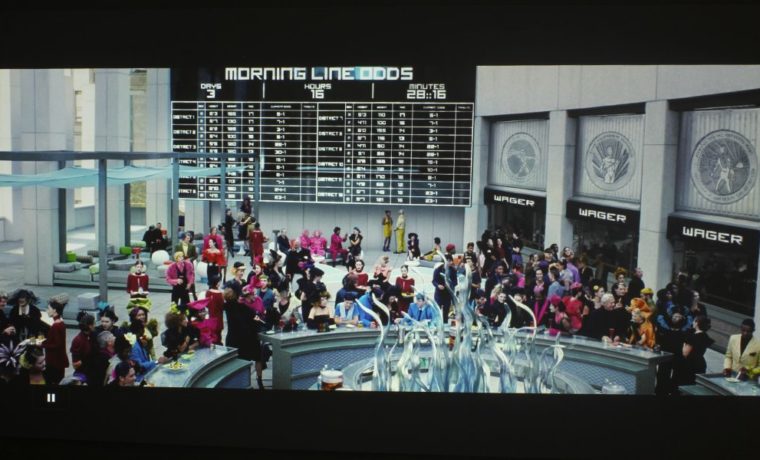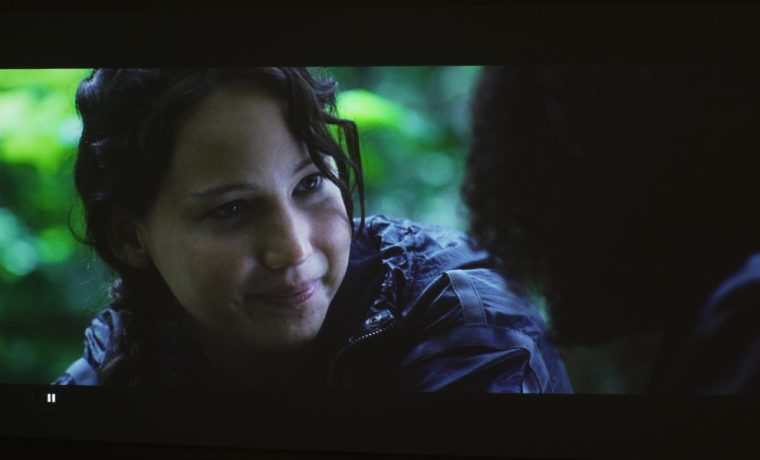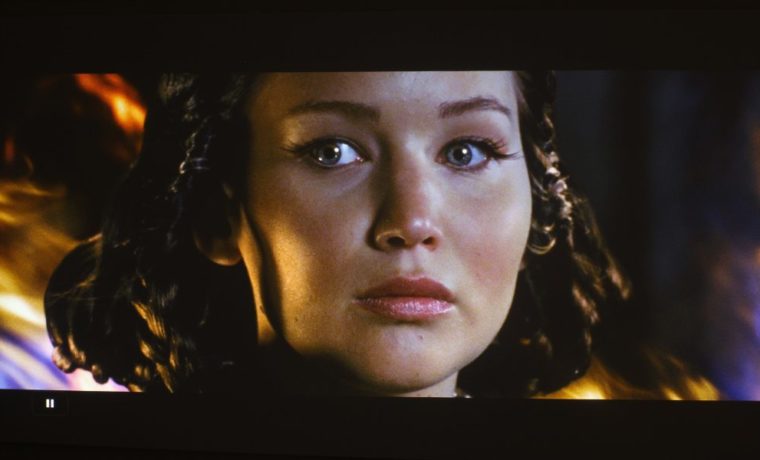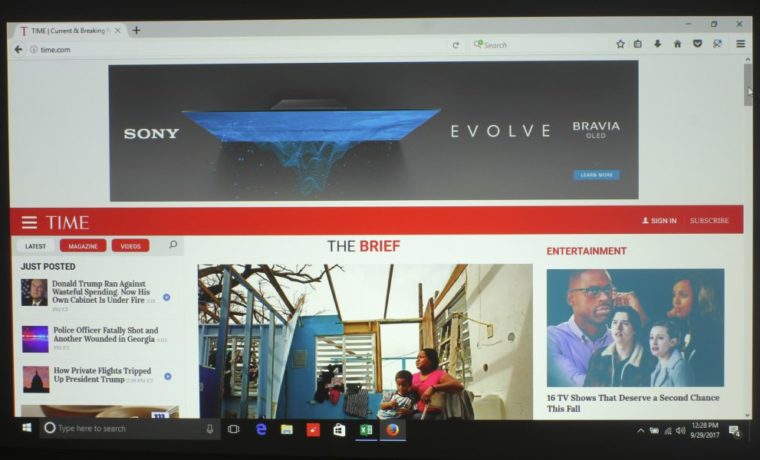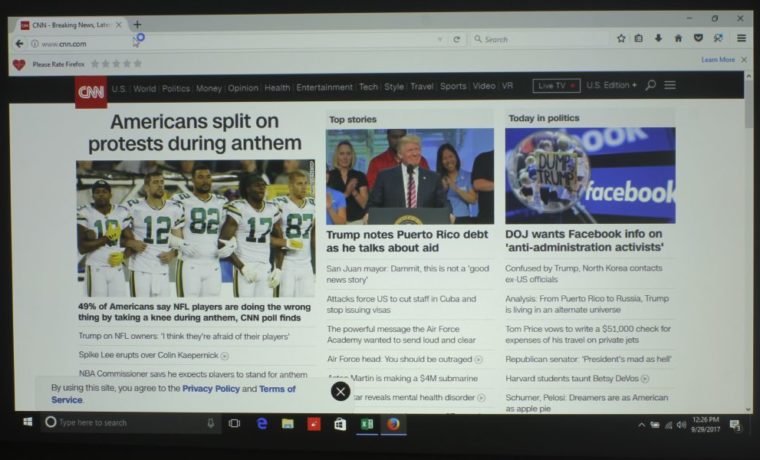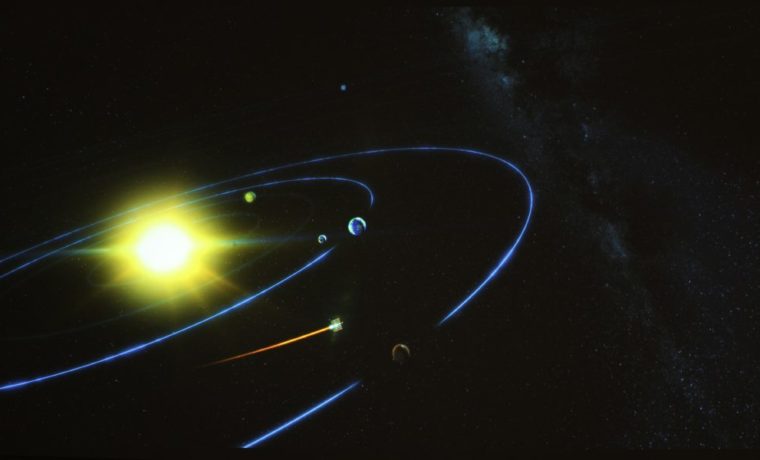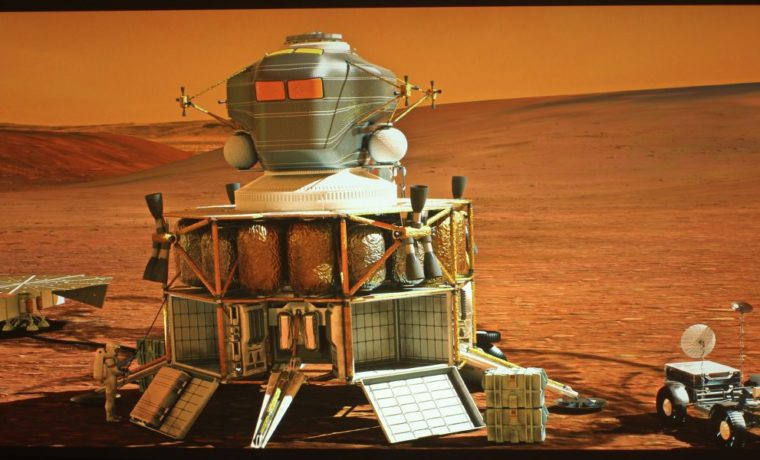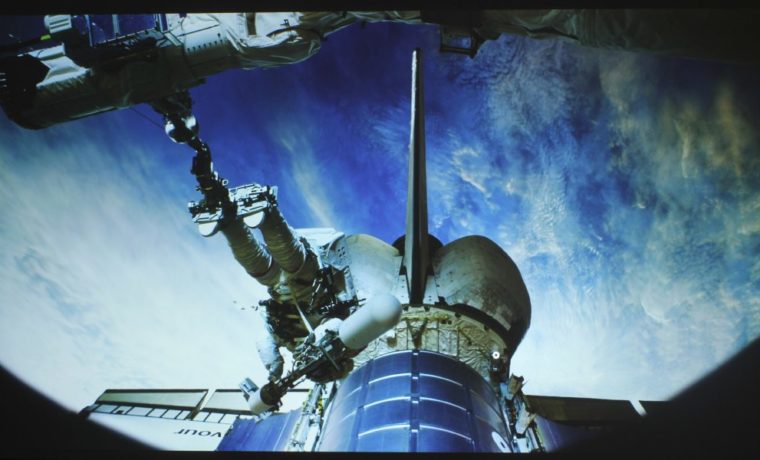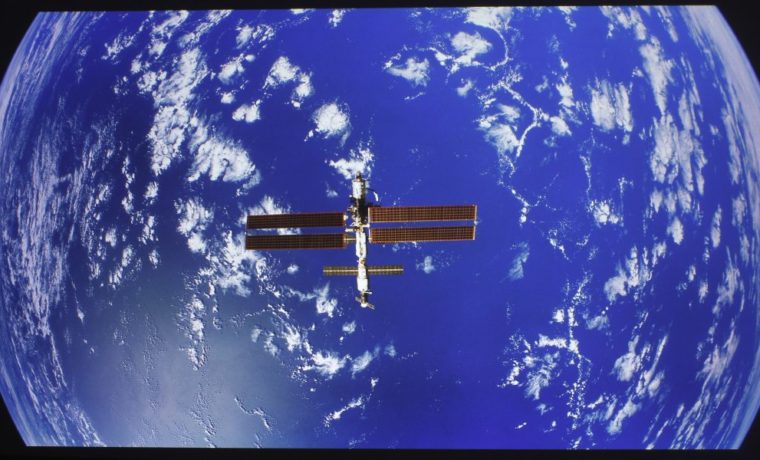The Casio XJ-L8300HN is a DLP projector with a laser/phosphor light engine, making it lamp-free with a long rated light engine life of up to 20,000 hours. Though it didn’t meet its 5,000 lumen claim, it came close at 4,461 lumens in Bright mode. It features the new Texas Instruments 4K UHD chip, advanced networking, and great placement flexibility. The lens is a manual 1.5:1 zoom and has a generous amount of lens shift – 25% horizontal, 60% vertical. The warranty is great – three years parts and labor, with five years or 10,000 hours on the light engine.
The XJ-L8300HN’s inputs and connectors panel is simple, but well laid out. There’s a LAN and an HDBaseT port, two Trigger inputs (one for a remote, one to trigger external devices like a motorized screen), a pair of HDMIs (one HDMI HDCP 2.2 for handling 4K), an Audio Out, a Service port, a DC (5V 2A) connector, and a Serial port for old school command and control. If you need to run more than one HDBaseT signal, you can get an HDBaseT transmitter for around $300 or less online.
The projector’s control panel is basic and easy to access – it’s right next to the inputs and connectors on the side of the projector. The menus are easy to navigate, and are well laid out as well. The remote control is simple and backlit (blue), with the added bonus of being able to turn it on and off at will.

